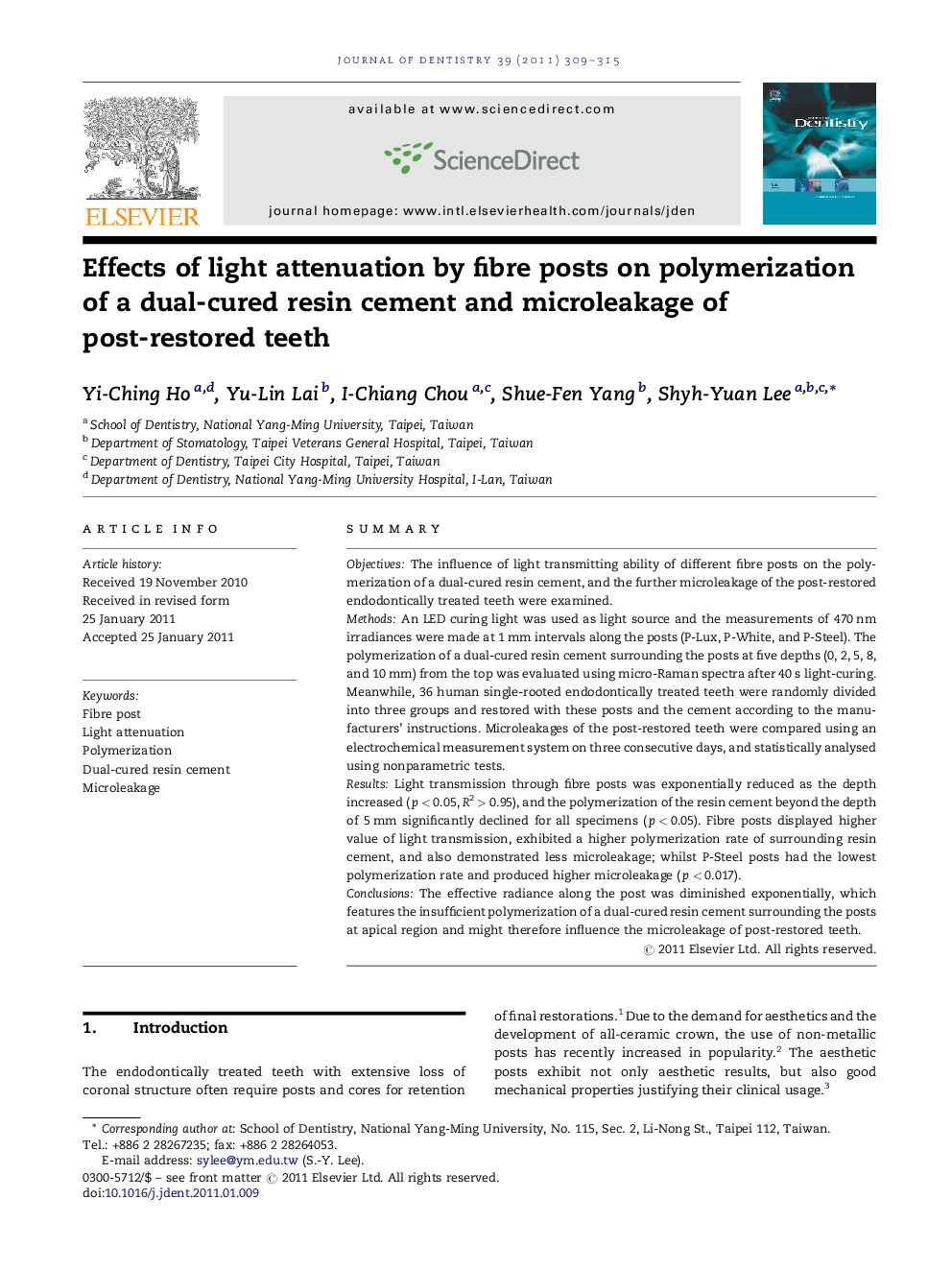| Article ID | Journal | Published Year | Pages | File Type |
|---|---|---|---|---|
| 3145254 | Journal of Dentistry | 2011 | 7 Pages |
SummaryObjectivesThe influence of light transmitting ability of different fibre posts on the polymerization of a dual-cured resin cement, and the further microleakage of the post-restored endodontically treated teeth were examined.MethodsAn LED curing light was used as light source and the measurements of 470 nm irradiances were made at 1 mm intervals along the posts (P-Lux, P-White, and P-Steel). The polymerization of a dual-cured resin cement surrounding the posts at five depths (0, 2, 5, 8, and 10 mm) from the top was evaluated using micro-Raman spectra after 40 s light-curing. Meanwhile, 36 human single-rooted endodontically treated teeth were randomly divided into three groups and restored with these posts and the cement according to the manufacturers’ instructions. Microleakages of the post-restored teeth were compared using an electrochemical measurement system on three consecutive days, and statistically analysed using nonparametric tests.ResultsLight transmission through fibre posts was exponentially reduced as the depth increased (p < 0.05, R2 > 0.95), and the polymerization of the resin cement beyond the depth of 5 mm significantly declined for all specimens (p < 0.05). Fibre posts displayed higher value of light transmission, exhibited a higher polymerization rate of surrounding resin cement, and also demonstrated less microleakage; whilst P-Steel posts had the lowest polymerization rate and produced higher microleakage (p < 0.017).ConclusionsThe effective radiance along the post was diminished exponentially, which features the insufficient polymerization of a dual-cured resin cement surrounding the posts at apical region and might therefore influence the microleakage of post-restored teeth.
